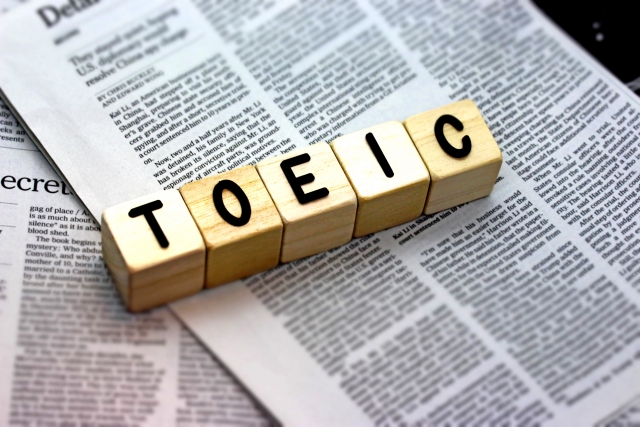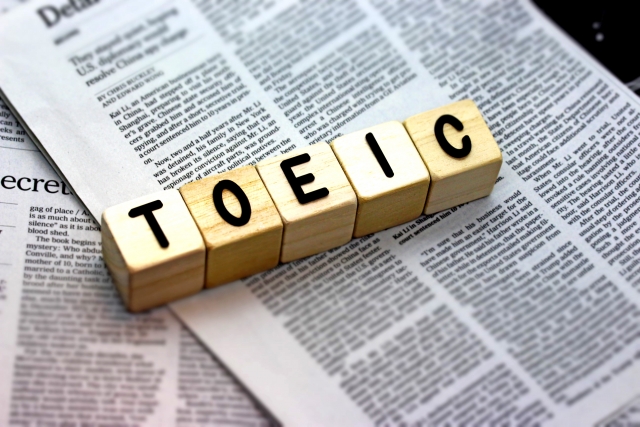ビジネス英語を強化するTOEIC攻略ステップアップガイドの第11回は「ビジネス英語プレゼンテーションスキル:説得力のある伝え方」です。グローバルビジネスにおいて、英語でのプレゼンテーション能力は必須のスキルとなっています。また、TOEICのスピーキングテストやライティングテストでも、情報を論理的に整理して伝える能力が問われます。今回は、英語プレゼンテーションの基本から説得力を高めるテクニックまでを解説します。
1. 英語プレゼンテーションの基本構造
効果的なプレゼンテーションには、明確な構造が不可欠です。基本的な構造を理解し、内容を論理的に組み立てることで、聴衆に伝わりやすいプレゼンテーションになります。
| セクション | 目的 | 含めるべき要素 |
|---|---|---|
| オープニング (Opening) | 聴衆の注意を引き、プレゼンの概要を示す | ・挨拶と自己紹介 ・トピックの紹介 ・プレゼンの目的 ・アジェンダの提示 |
| 本論 (Main Body) | 主要なポイントを論理的に展開する | ・主要ポイント(通常3-5点) ・各ポイントの説明と根拠 ・例示やデータによる裏付け ・視覚的資料の活用 |
| クロージング (Closing) | 内容を要約し、次のステップを示す | ・主要ポイントの要約 ・結論または提案 ・アクションプラン ・質疑応答の促し |
効果的なオープニングの作り方
オープニングは聴衆の第一印象を決める重要な部分です。以下の要素を含めることで、効果的なオープニングになります。
オープニングの基本フレーズ:
- 挨拶: “Good morning/afternoon, everyone. Thank you for joining me/us today.”
- 自己紹介: “My name is [Name] from [Department/Company]. I am responsible for [Role/Project].”
- トピック紹介: “Today, I would like to talk about/present/discuss [Topic].”
- 目的説明: “The purpose of this presentation is to [inform/update/propose/analyze]…”
- アジェンダ提示: “I’ll cover three main points: First,… Second,… And finally,…”
- 時間の目安: “This presentation will take approximately [X] minutes, and there will be time for questions at the end.”
わかりやすい本論の組み立て方
本論は、聴衆が理解しやすいよう論理的に構成することが重要です。
本論の構成テクニック:
- ポイント提示: “The first key point is…” / “Let’s move on to the second point…”
- トランジション: “Now that we’ve discussed X, let’s turn to Y…” / “This brings us to our next point…”
- 例示: “To illustrate this point…” / “For example…” / “Let me give you a specific case…”
- データ提示: “According to our research…” / “The data shows that…” / “As you can see in this graph…”
- 比較対照: “In contrast to the previous method…” / “Compared to last year’s results…”
- 強調: “I’d like to emphasize that…” / “It’s important to note that…” / “The key takeaway here is…”
印象に残るクロージングの作り方
クロージングは聴衆が最後に聞く部分であり、内容を記憶に定着させる重要な役割があります。
クロージングの基本フレーズ:
- 要約の導入: “To summarize…” / “In conclusion…” / “Let me recap the main points…”
- ポイント要約: “We’ve discussed [Point 1], [Point 2], and [Point 3].”
- 結論提示: “Based on these findings, we can conclude that…”
- 提案: “Therefore, I recommend/suggest/propose that we…”
- 次のステップ: “The next steps will be…” / “Moving forward, we plan to…”
- 質疑応答への移行: “Thank you for your attention. I’d be happy to answer any questions you may have.”
2. 説得力を高める表現テクニック
英語プレゼンテーションの説得力を高めるには、適切な言語表現を使うことが重要です。以下のテクニックを活用しましょう。
明確さと簡潔さを重視する
| テクニック | 改善前 | 改善後 |
|---|---|---|
| シンプルな単語を使う | “We have implemented a methodology to facilitate the optimization of operational efficiency.” | “We have created a method to improve efficiency.” |
| 短い文を使う | “The results of the market research that we conducted over the past six months, which included surveys, interviews and focus groups with potential customers in our target demographic, indicate that there is a significant opportunity for our new product line in the Asian market, particularly in countries like Japan and South Korea, where consumer interest was notably high.” | “Our six-month market research shows a significant opportunity for our new products in Asia. Japan and South Korea showed particularly high consumer interest.” |
| 冗長な表現を避ける | “At this point in time, we are in the process of developing a new system.” | “We are now developing a new system.” |
| 能動態を優先する | “The decision was made by management to increase investment.” | “Management decided to increase investment.” |
数字と具体例を効果的に使う
数字や具体例を使うことで、抽象的な概念を理解しやすくし、説得力を高めることができます。
数字と具体例の効果的な使い方:
改善前:
“Our new system is much faster than the old one.”
改善後:
“Our new system processes orders 40% faster than the old one, reducing wait time from 3 minutes to just 1.8 minutes per transaction.”
改善前:
“Customer satisfaction has improved significantly since implementing the new service protocol.”
改善後:
“Customer satisfaction scores have increased from 3.2 to 4.5 out of 5 since implementing the new service protocol. In particular, our ‘problem resolution’ rating has jumped by 65%.”
改善前:
“The market for our products is growing in several countries.”
改善後:
“Our market share has increased in three key regions: 12% growth in North America, 23% in Europe, and a remarkable 47% in Southeast Asia, particularly in Vietnam and Thailand.”
適切な接続表現で論理的なつながりを強化
接続表現を使うことで、ポイント間の論理的なつながりを明確にし、聴衆の理解を助けます。
| 論理関係 | 接続表現 | 使用例 |
|---|---|---|
| 追加情報 | In addition, Furthermore, Moreover, Additionally | “Our new product is cost-effective. Moreover, it requires minimal training for users.” |
| 対比・対照 | However, On the other hand, In contrast, Nevertheless | “The initial investment is significant. However, the long-term savings will outweigh the costs.” |
| 原因・結果 | Therefore, As a result, Consequently, Thus | “Customer complaints increased by 15%. As a result, we implemented a new quality control process.” |
| 例示 | For example, For instance, Such as, To illustrate | “We need to expand into new markets. For instance, the Southeast Asian market shows great potential.” |
| 目的 | In order to, So that, To achieve this | “In order to increase market share, we propose a three-phase marketing strategy.” |
| 要約・結論 | In conclusion, To summarize, In summary, Overall | “To summarize, our new approach offers three key benefits: reduced costs, improved efficiency, and higher customer satisfaction.” |
説得力を高める修辞的テクニック
以下の修辞的テクニックを活用することで、プレゼンテーションの印象を強め、聴衆の記憶に残りやすくなります。
効果的な修辞テクニック:
- 3つの法則 (Rule of Three): 重要なポイントを3つにまとめる
例: “This solution is faster, cheaper, and more reliable than our current system.” - 対比 (Contrast): 対立する概念を並べて効果を高める
例: “We can either continue with the status quo and fall behind our competitors, or embrace innovation and lead the market.” - 反復 (Repetition): 重要な言葉やフレーズを繰り返して強調する
例: “Our vision is to create sustainable solutions. This vision guides our product development. This vision shapes our corporate culture.” - 逆説 (Paradox): 一見矛盾する表現で注目を集める
例: “By spending more on this new technology now, we will actually save money in the long run.” - 引用 (Quotation): 権威ある人物の言葉を引用して信頼性を高める
例: “As Peter Drucker once said, ‘The best way to predict the future is to create it.’ That’s exactly what our new initiative aims to do.”
3. 視覚資料の効果的な活用法
プレゼンテーションの説得力を高めるには、視覚資料(スライド、グラフ、チャートなど)の効果的な活用が欠かせません。
スライド作成の基本原則
| 原則 | 実践方法 | 避けるべきこと |
|---|---|---|
| シンプルさを保つ | ・1枚のスライドに1つの主要アイデア ・箇条書きは5-7項目以内に抑える ・余白を適切に取る | ・情報過多のスライド ・小さすぎるフォントサイズ ・複雑な背景デザイン |
| 視覚的一貫性 | ・一貫したフォント、色、レイアウト ・企業のブランドガイドラインに従う ・色のコントラストを確保 | ・スライドごとに異なるデザイン ・読みにくい色の組み合わせ ・装飾的すぎるフォント |
| 視覚的階層を作る | ・重要な情報を目立たせる ・見出しと本文の区別を明確に ・サイズと色で重要度を示す | ・すべての要素が同じ重みに見える ・情報の優先順位が不明確 ・視線の流れが不自然 |
| 適切な画像・図表の使用 | ・関連性の高い画像を選ぶ ・データを視覚化する ・図表にタイトルと説明を付ける | ・装飾だけの目的の画像 ・複雑すぎるグラフ ・低解像度の画像 |
データを効果的に視覚化する方法
データを適切に視覚化することで、複雑な情報も理解しやすくなります。
データタイプ別の適切なグラフ選択:
棒グラフ (Bar Chart): カテゴリー間の比較に最適
例: 部門別売上、国別市場シェアなど
折れ線グラフ (Line Chart): 時間経過による変化を示すのに適している
例: 月次売上推移、年間成長率の変化など
円グラフ (Pie Chart): 全体に対する割合を示すのに効果的
例: 市場シェア、予算配分など(ただし5-7セグメント以内に抑える)
散布図 (Scatter Plot): 2つの変数間の相関関係を示すのに適している
例: 価格と販売量の関係、投資と収益の相関など
表 (Table): 正確な数値の比較が必要な場合に有効
例: 財務データ、詳細な仕様比較など
グラフ表示の基本ルール:
- 適切なタイトルとラベルを必ず付ける
- 凡例を明確に示す
- データソースを記載する
- スケールと単位を明示する
- 強調したいポイントを視覚的に際立たせる
視覚資料と口頭説明の連携
効果的なプレゼンテーションでは、視覚資料と口頭説明が補完し合うことが重要です。
視覚資料と説明を連携させるテクニック:
言語的合図: スライドと説明を結びつける表現を使う
- “As you can see on this slide…”
- “This graph illustrates…”
- “Looking at the figures on the right…”
- “The highlighted area shows…”
順次開示: 情報を一度に全部見せるのではなく、話の流れに合わせて順番に表示する
- アニメーション機能を使って、説明に合わせて項目を表示
- 複雑なグラフは段階的に構成要素を表示
ポインティング: 注目してほしい部分を指し示す
- レーザーポインターや画面上のポインターを使用
- 「ここ」「これ」などの曖昧な指示語を避け、具体的に説明
ストーリーテリング: データや図表をストーリーの一部として説明する
- “This downward trend began when we introduced…”
- “The spike you see here represents the moment when…”
4. 発表スキル:声・姿勢・ジェスチャー
内容だけでなく、発表の仕方も説得力に大きく影響します。声の使い方、姿勢、ジェスチャーなどの非言語的要素も重要です。
効果的な声の使い方
| 要素 | テクニック | 効果 |
|---|---|---|
| 音量 | ・部屋の大きさに合わせて調整 ・重要なポイントで少し音量を上げる ・聴衆の最後列にも聞こえるよう心がける | ・全員に内容が伝わる ・重要なポイントが強調される ・自信と熱意が伝わる |
| スピード | ・適度なペースを保つ(1分間に100-120語程度) ・重要な点ではやや遅めに ・説明が複雑な部分では特に意識的にゆっくり話す | ・理解しやすくなる ・重要なポイントが記憶に残る ・聴衆が内容についていける |
| 抑揚 | ・モノトーンを避け、自然な抑揚をつける ・質問文は語尾を上げる ・結論や重要な主張は語尾を下げる | ・聴衆の注意を維持できる ・内容の構造が伝わりやすい ・退屈さを軽減できる |
| 間の取り方 | ・重要なポイントの前後に短い間を置く ・スライド切り替え時に間を取る ・複雑な内容の後に消化のための間を設ける | ・重要なメッセージが強調される ・聴衆が情報を整理する時間ができる ・プレゼンのリズム感が生まれる |
自信を伝える姿勢とジェスチャー
効果的な非言語コミュニケーション:
立ち姿勢:
- 背筋を伸ばし、肩を自然に開く
- 体重を両足に均等にかける
- 聴衆に対して正面を向ける
- 必要以上に動き回らない
アイコンタクト:
- 様々な場所の聴衆と目を合わせる
- 一人に3-5秒程度のアイコンタクトを心がける
- 部屋全体をカバーするように視線を動かす
- ノートやスライドばかり見ないよう注意する
効果的なジェスチャー:
- 要点を強調するために手のジェスチャーを使う
- 開いた手のひらで誠実さと開放性を示す
- 数を示す際に指を使う
- 大きすぎず小さすぎないジェスチャーを心がける
避けるべき癖:
- ポケットに手を入れる
- 腕を組む
- 髪や顔を触る
- ペンやレーザーポインターをいじり続ける
- 同じ場所で体を揺らす
緊張を和らげるテクニック
プレゼンテーション時の緊張は誰もが経験するものですが、以下のテクニックで軽減できます。
プレゼン前の準備:
- 十分な練習: 内容を完全に理解し、流れをスムーズにする
- 会場の下見: 可能であれば事前に会場を確認し、機器をテストする
- 深呼吸: プレゼン直前に深呼吸を数回行い、リラックスする
- ポジティブな自己暗示: 「うまくいく」と自分に言い聞かせる
プレゼン中の対処法:
- 最初の1分に集中: 最初がうまくいけば自信がつく
- 友好的な顔を見つける: 聴衆の中で反応の良い人に時々目を向ける
- 一時停止を恐れない: 考えをまとめるために短い間を取ることは自然
- 水を飲む: 喉が渇いたり言葉に詰まったりしたときに時間稼ぎになる
万が一の対応:
- 失敗を認める: 大きなミスをしたら、シンプルに認めて前に進む
- ユーモアを取り入れる: 適切な場面では軽いユーモアで場の雰囲気を和らげる
- バックアッププランを持つ: 技術的問題に備えて代替案を用意しておく
5. 質疑応答を効果的に行う
プレゼンテーション後の質疑応答も、説得力を左右する重要な部分です。適切な対応で信頼性を高めましょう。
質問への対応の基本姿勢
| ポイント | 対応方法 | 例文 |
|---|---|---|
| 質問に感謝する | 質問者に謝意を示し、質問を歓迎する姿勢を見せる | “Thank you for that question.” “That’s an excellent question.” “I appreciate you bringing that up.” |
| 質問を確認する | 必要に応じて質問の内容を確認し、理解していることを示す | “If I understand correctly, you’re asking about…” “So your question is regarding…” “Let me make sure I understand your question…” |
| 簡潔に答える | ポイントを絞って明確に回答し、長すぎる説明は避ける | “The short answer is…” “There are three main reasons for this…” “Based on our research, we found that…” |
| 正直に対応する | 答えがわからない場合は誠実に認め、フォローアップを約束する | “That’s a good question, but I don’t have that specific information right now. I’ll find out and get back to you by tomorrow.” “I’d like to research that more thoroughly before giving you a definitive answer.” |
| 全体に向けて答える | 質問者だけでなく全員に向けて回答し、情報を共有する | “For everyone’s benefit, let me explain that…” “This is relevant for all of us because…” |
難しい質問への対処法
時に挑戦的な質問や答えにくい質問が出ることもあります。そのような状況への対処法を知っておきましょう。
難しい質問への対応テクニック:
批判的な質問:
- 感情的にならず、事実に基づいて冷静に対応する
- 質問の背後にある懸念を理解し、それに対応する
- 例: “I understand your concern about [topic]. Let me address that by explaining…”
範囲外の質問:
- プレゼンのスコープを丁寧に説明し、フォーカスを戻す
- 別の機会に詳しく話し合うことを提案する
- 例: “That’s beyond the scope of today’s presentation, but I’d be happy to discuss it with you separately.”
複雑すぎる質問:
- 質問を複数の部分に分解し、一つずつ対応する
- 全体像を簡潔に説明してから詳細に入る
- 例: “There are several aspects to your question. Let me address them one by one.”
答えられない質問:
- 正直に認め、情報を調査する約束をする
- 知っている範囲で部分的に回答する
- 例: “I don’t have the complete data on that, but what I can tell you is…”
誤解に基づく質問:
- 丁寧に誤解を訂正し、正確な情報を提供する
- 質問者の面子を潰さないよう配慮する
- 例: “I think there might be a slight misunderstanding. Let me clarify that…”
質疑応答を締めくくる方法
質疑応答の最後には、きちんと締めくくりの言葉を述べることが重要です。
効果的な締めくくりフレーズ:
- “If there are no further questions, I’d like to thank you all for your attention today.”
- “That brings us to the end of our Q&A session. Thank you for your thoughtful questions.”
- “To conclude, let me emphasize our three key takeaways once more: [brief recap].”
- “If you think of any questions later, please feel free to contact me at [email/contact information].”
- “Thank you again for your time today. I look forward to our next steps in this project.”
6. TOEIC対策:プレゼンテーション関連問題の攻略
TOEICのスピーキングテストやライティングテストでは、プレゼンテーションスキルに関連する問題が出題されます。以下の対策を実践しましょう。
TOEIC Speaking Test 対策
| 問題タイプ | 求められるスキル | 対策ポイント |
|---|---|---|
| Read a text aloud (音読問題) | ・発音 ・イントネーション ・リズム | ・句や節で適切に区切る ・内容に合った抑揚をつける ・重要な語句を強調する |
| Describe a picture (写真描写問題) | ・観察力 ・描写能力 ・論理的構成 | ・全体から詳細へと説明する ・位置関係を明確に述べる ・動作や状況を具体的に描写する |
| Respond to questions (質問応答問題) | ・理解力 ・即応力 ・明確な回答 | ・質問の意図を正確に捉える ・構造化された回答を心がける ・具体例を含める |
| Propose a solution (問題解決提案問題) | ・問題分析 ・解決策提示 ・論理的説明 | ・問題の本質を簡潔に要約する ・実行可能な解決策を提案する ・期待される結果を述べる |
| Express an opinion (意見陳述問題) | ・立場表明 ・根拠提示 ・説得力 | ・明確な立場を最初に述べる ・2-3の根拠を挙げる ・具体例や経験を交える |
TOEIC Writing Test 対策
Write a response to an e-mail (Eメール返信問題):
対策ポイント:
- ビジネスメールの基本形式を守る(挨拶、本文、締めくくり)
- 全ての質問や要求に漏れなく対応する
- 簡潔かつ丁寧な表現を心がける
- 論理的な構成で情報を整理する
Express an opinion (意見記述問題):
対策ポイント:
- 明確な立場表明から始める
- 論理的な構成を心がける(序論、本論、結論)
- 各段落は一つの主要ポイントに焦点を当てる
- 適切な接続表現を使用して論理の流れを作る
- 具体的な例や経験を含めて説得力を高める
頻出英語表現をマスターする
TOEICテストで高得点を取るには、プレゼンテーションでよく使われる表現をマスターすることが重要です。
プレゼンテーション関連の頻出表現:
データや図表の説明:
- “This graph shows/illustrates/represents…”
- “As you can see from the chart…”
- “The figures indicate/suggest/reveal that…”
- “There was a significant increase/decrease in…”
- “The trend line shows a steady growth/decline over the period.”
提案・推奨:
- “I would like to suggest/recommend/propose…”
- “The best course of action would be to…”
- “We should consider the following options…”
- “Based on our findings, I recommend that we…”
- “It would be advisable to…”
意見表明:
- “In my opinion/view/experience…”
- “I strongly believe that…”
- “From my perspective…”
- “I am convinced that…”
- “It seems to me that…”
結論・要約:
- “To sum up/summarize…”
- “In conclusion…”
- “To recap our main points…”
- “The key takeaway is…”
- “Let me conclude by emphasizing…”
7. 文化的配慮:国際的なプレゼンテーションでの注意点
国際的な場でのプレゼンテーションでは、文化的な違いに配慮することが重要です。
異なる文化背景への配慮
| 文化的側面 | 配慮すべきポイント | 実践アドバイス |
|---|---|---|
| コミュニケーションスタイル | ・直接的 vs. 間接的 ・フォーマル vs. カジュアル ・感情表現の度合い | ・相手の文化に合わせたトーンを選ぶ ・冗談や皮肉は文化によって受け取り方が異なるため注意 ・適切な敬意を示す言葉遣いを心がける |
| 非言語コミュニケーション | ・ジェスチャーの意味の違い ・アイコンタクトの適切さ ・対人距離 | ・特定の文化で不適切なジェスチャーを避ける ・アイコンタクトの程度を調整する ・物理的距離の取り方に配慮する |
| 時間感覚 | ・時間厳守の重視度 ・スケジュールの柔軟性 ・プレゼンの長さへの期待 | ・予定時間を厳守する ・文化によっては余裕のあるスケジュールを組む ・質疑応答の時間を十分に確保する |
| コンテンツの提示方法 | ・直線的 vs. 循環的論理展開 ・詳細重視 vs. 大局重視 ・データ重視 vs. 関係性重視 | ・様々な思考パターンに対応できるよう構成する ・詳細情報と全体像の両方を提供する ・定量的データと定性的説明をバランスよく含める |
国際的なビジネス場面での英語プレゼンテーション
国際的な場での実践ポイント:
- シンプルな英語を使用する: 複雑な表現や専門用語、イディオムを避け、理解しやすい英語を心がける
- スピードに注意する: 非ネイティブスピーカーのために、やや遅めのペースで明瞭に話す
- 視覚資料を効果的に活用する: 言語バリアを補うために、図表やイメージを多用する
- キーポイントを繰り返す: 重要なメッセージは異なる言い方で複数回伝える
- 質問への対応を工夫する: 質問の理解を確認し、必要に応じて言い換えて回答する
- 文化的参照を避ける: 特定の文化でしか通じない例え話や比喩を避ける
- タイムゾーンや日付形式に注意する: 国際的なミーティングでは、誤解を避けるために明確に示す(例:April 1, 2023, 14:00 UTC)
翻訳・通訳が入る場合の対応
通訳者を介したプレゼンテーションでは、特別な配慮が必要です。
通訳者と協働するためのポイント:
- 事前準備: 可能であれば通訳者にプレゼン資料を事前に提供し、専門用語や重要なポイントを共有する
- 短いセグメントで話す: 一度に長く話さず、通訳者が処理しやすい長さで区切る
- 明瞭に発音する: 過度に早口にならず、明瞭に発音する
- 専門用語に注意する: 業界特有の用語や略語は初出時に説明を加える
- 文化的な言及に注意: 直訳が困難な文化的な言及や冗談を避ける
- 視覚資料との連携: スライドの言語と口頭での言語を一致させ、混乱を避ける
- 通訳者のための間: 通訳者が訳す時間を考慮して、適切な間を取る
8. プレゼンテーションスキルを磨くためのアクションプラン
英語プレゼンテーションスキルは継続的な練習で向上します。以下のアクションプランを実践しましょう。
英語プレゼンテーション力向上のための3つのアクション
- プレゼンテーション動画を分析する:
- TED Talksなどの優れたプレゼンテーションを視聴し、構成、話し方、ジェスチャーなどを観察する
- 特に印象に残ったフレーズや技法をノートに記録し、自分のプレゼンに取り入れる
- 週に1つは新しいプレゼンテーションを視聴する習慣をつける
- ミニプレゼンテーション練習を定期的に行う:
- 身近なトピックについて2-3分のミニプレゼンを準備し、録画して自己分析する
- 声の大きさ、スピード、姿勢、ジェスチャーなどを客観的に評価する
- 可能であれば同僚や友人からフィードバックをもらう
- 月に最低2回はこの練習を行う
- 実践的なプレゼンテーション機会を積極的に求める:
- 社内ミーティングでの発表機会を見つける
- オンラインwebinarや勉強会での発表に挑戦する
- 英語スピーチコンテストやトーストマスターズなどの場に参加する
- 年に最低3回は実際のプレゼンテーション経験を積む
まとめ
ビジネス英語プレゼンテーションスキルは、グローバルな環境での成功に不可欠な能力です。明確な構造、効果的な言語表現、適切な視覚資料、堂々とした発表態度、そして質疑応答への適切な対応を通じて、説得力のあるプレゼンテーションを実現できます。
また、これらのスキルはTOEICのスピーキングテストやライティングテストでも評価されます。文化的な配慮も忘れずに、継続的な練習を通じて、自信を持って英語でのプレゼンテーションができるよう努めましょう。
次回は「ビジネス交渉英語:Win-Winの関係を構築する表現テクニック」をテーマに、ビジネス交渉での効果的な英語表現について解説します。お楽しみに!


